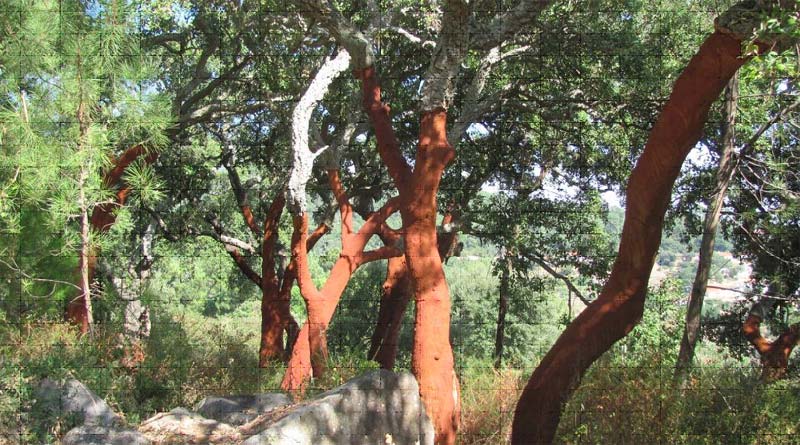The Algarve landscape would not be complete without the majestic cork oak, Quercus Suber, as a backdrop. Indigenous to the Mediterranean, it was revered by the ancient Greeks as a symbol of honour and liberty and they marvelled at its “capacity to renew its skin once it is removed”. In Portugal, the cork oak is a species protected by law as are the cork oak forests called “montados”. These laws, going back to the beginning of the XIII century, have lead to the evolution of a unique and rich ecosystem that is today home to over 200 bird and plant species and mammals. These include grey herons, black storks, kestrels, eagles, foxes, wolves, wild boar, deer and the endangered Iberian lynx.
- Cork tree in the Algarve © M Dommett
The bark is cut off the cork oaks in summer when the inner layer comes away most easily. The first extraction takes place when a tree is between 25 and 30 years old. Subsequent extractions take place every nine years. Once removed, each tree is marked with the last two digits of the next year in which it will be cut.
Cork is an ecological, recyclable and biodegradable gift from nature with amazing insulation properties. Its use goes back at least to 400 B.C. where in Italy it was used in roof tiles, buoys, lids and ladies shoes. Today it is not only used for cork bottle stoppers, but extensively in other industries – flooring, thermal and acoustic insulation, the manufacture of musical instruments, footwear, the car industry and increasingly in the world of fashion and eco-design.
Portugal is the world’s leading exporter of cork, supplying over 150 000 tonnes a year which is about 60% of the world’s production. In the Algarve, the eastern town of São Brás de Alportel is proud to produce the best cork bottle stoppers in the world. The municipality has introduced the “Rota da Cortiça” (www.rotadacortica.pt) to give visitors a glimpse of the history of this special product.

